

SSH To A Gnome-Boxes Virtual OS On Your Web Server
In the last tutorial I discussed how to connect to your Web server’s Web pages with all links working using SFTP and GVFS. I’m assuming you are that far along now and your SSH connection between your client and server is already working and keyed. What I am going to discuss now is setting up a connection to your Web server that gives a client access to a virtual OS running on your Web server and getting graphical access to specific applications on your server via SSH with your client. Access to virtual systems is a handy thing to deploy on your server. Like me you may like to experiment with certain applications and OSs and maybe even maintain or develop/customize some things. Currently I maintain a modified Debian XFCE 32bit system, do some application customization and scripting work on Linux Lite, and do some work with the AlphaVantage API. It’s much more resource convenient to keep these systems and applications on virtual hardware on my server than bare metal multi-boot them or virtualize them on my desktop work computer. I began this series on setting up your own Debian LAMP server with simplicity in mind, and no virtualization software is easier to use than Gnome-Boxes, so that is what I’m going to discuss now, along with some alternative secure ways to make connections to the virtualized systems on your server.
Section 1: Basic installation and usage. (You are on this page.)
Section 2: Getting around in gnome-boxes.
Section 3: Connection alternatives.
First you will need to install gnome-boxes so open up synaptic package manager on your Debian DE on your LAMP server and type gnome-boxes into the search box and locate and install the package and all dependencies.
One of the ways to make a connection to systems that you virtualize on your server is to use an SSH tunnel and a VNC client like Remmina. It uses more resources, but has a few advantages over the other connection methods I will discuss because you are remotely accessing your server’s Debian DE and you will be able to use all the GUI software available to your DE not just gnome-boxes. If you have at least 4gig of RAM on your client VNC via a Remmina client will work very well for you but you will need an X display server on your server to forward your desktop. If you intend to use a Remmina client for VNC open up synaptic on your server and type x11vnc into the search box and locate and install the package. Restart your server after installations. See images below:
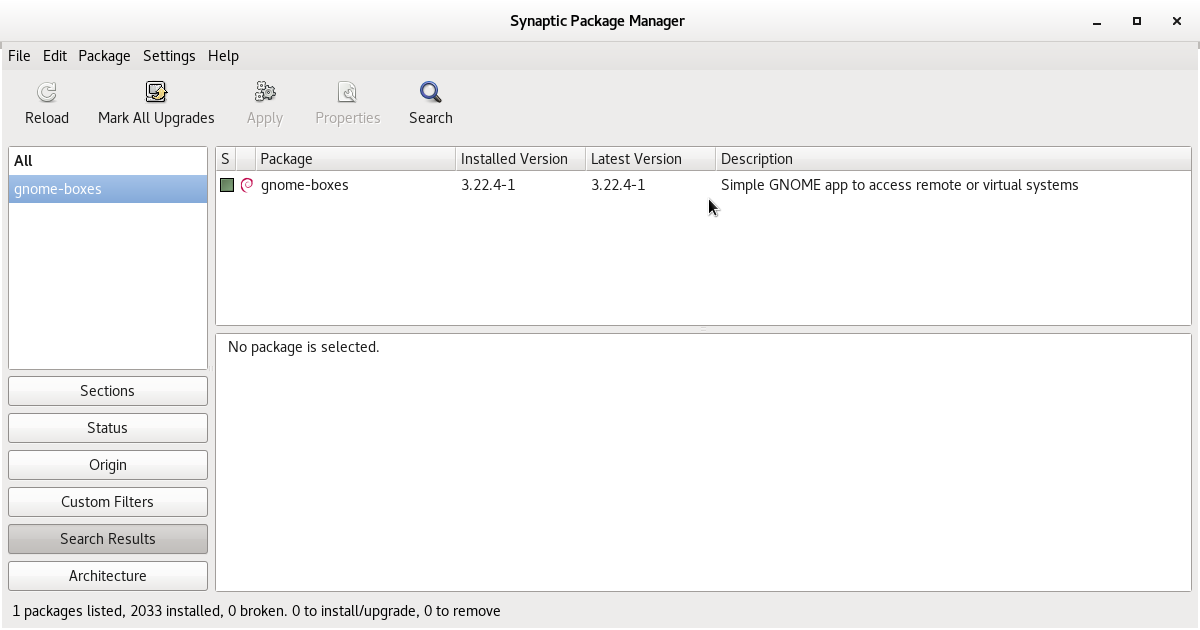
Just select the x11vnc package and mark it for installation and the data package will be marked along with any other dependencies.
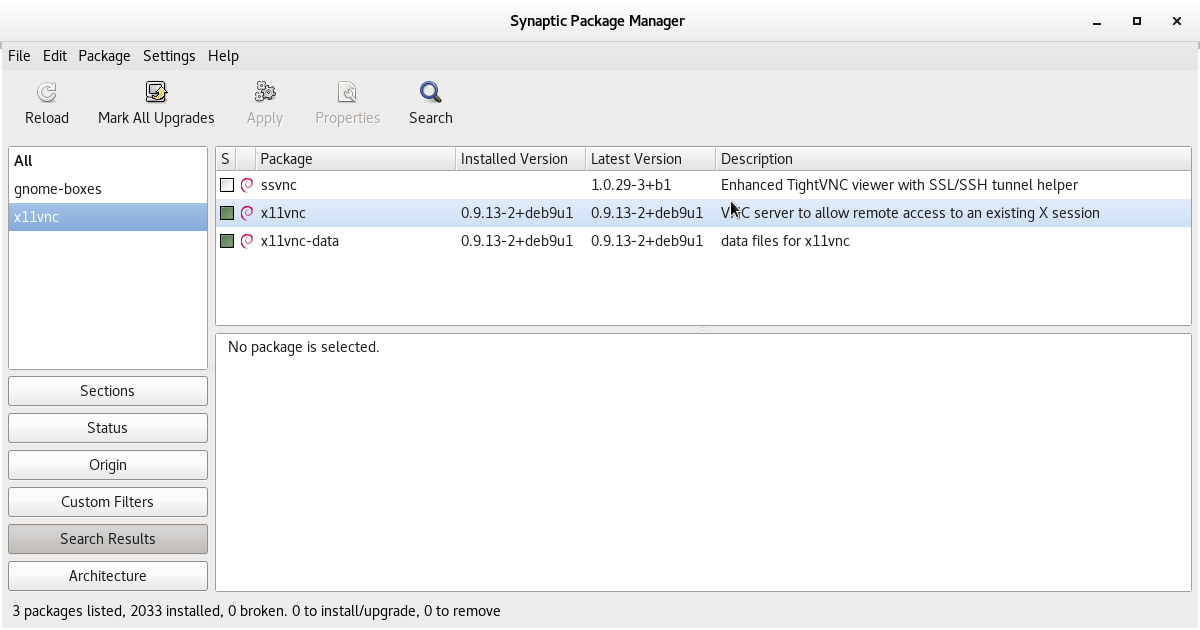
If you intend to use Remmina with an SSH tunnel and a VNC connection read through my tutorial on setting up and scripting x11vnc and Remmina connections on Debian. If your client is a Linux system (i/e Linux Lite 4.x) that cannot run gnome-boxes without dependency issues, or if you have already set up a Remmina VNC client connection via an SSH tunnel to your server, gnome-boxes will run a virtual OS on your server for you and you can connect and use it and your Debian DE on your server just fine this way. See my tutorial on this kind of connection at the link below:
Linux Lite 4.x Connections To & From Debian 9
After completing your installations and restarting your computer find gnome-boxes in the menu on your server’s Debian DE and open it. You should be presented with an interface like the image below.
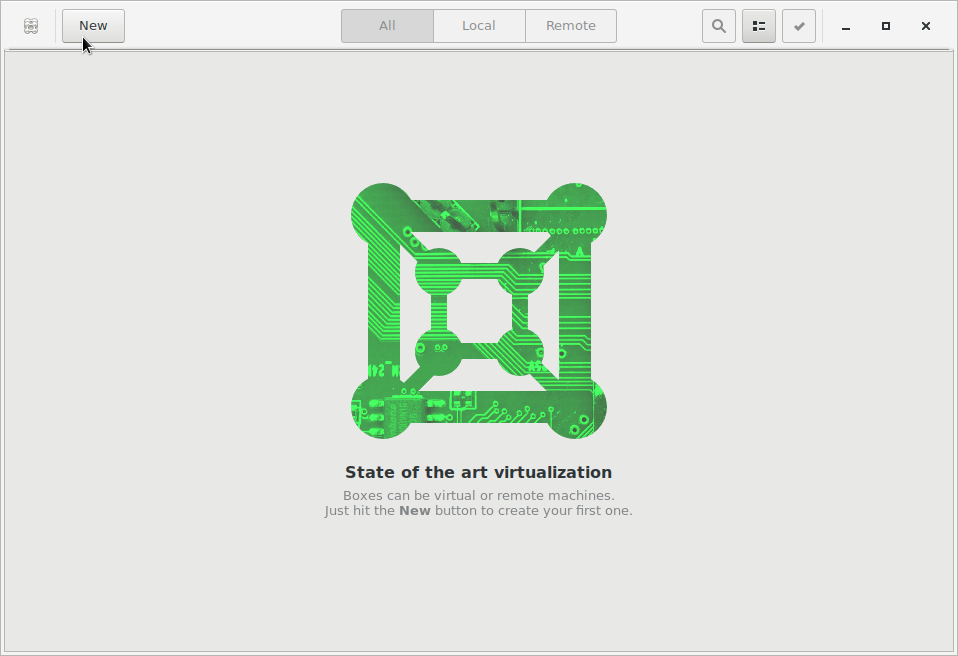
To begin using and testing out gnome boxes go on the Internet and locate and download a live Linux ISO first. Boxes will run live ISOs of most Ubuntu, Debian, and RHEL based systems, and many BSD based OSs, and even Windows from XP up. In this first case I’m going to use Linux Lite 4.x 64bit. After you download a live ISO click on the New button (see image above) and you will be presented with the interface below.
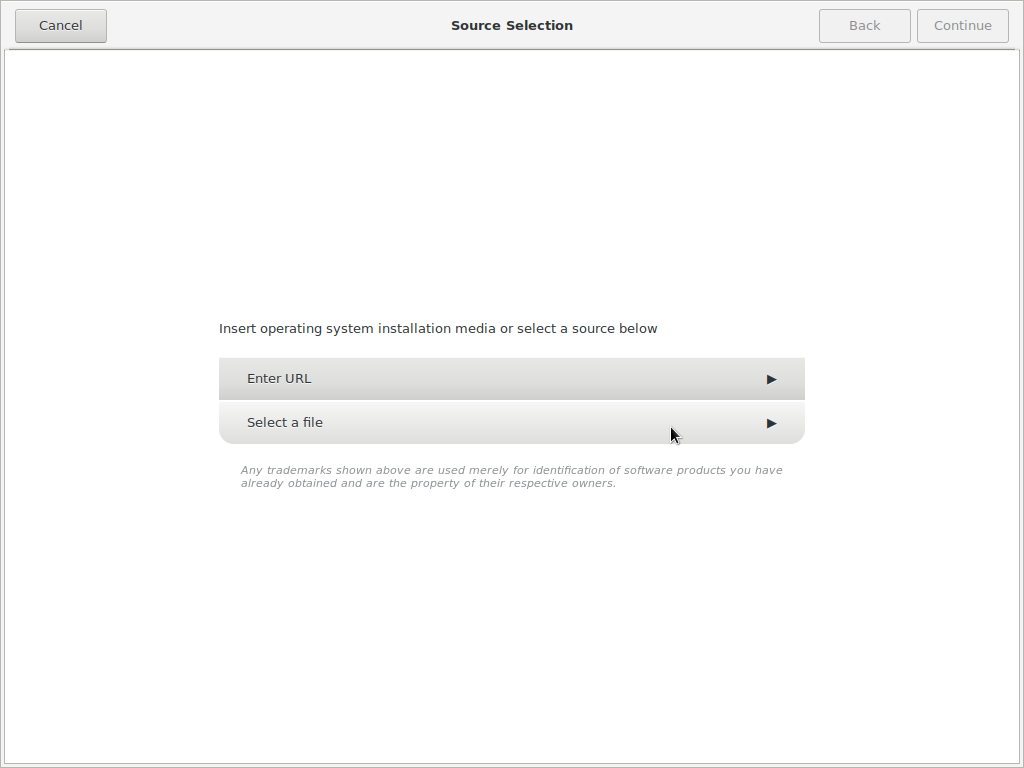
Click on Select a file and locate the ISO you downloaded. See image below:
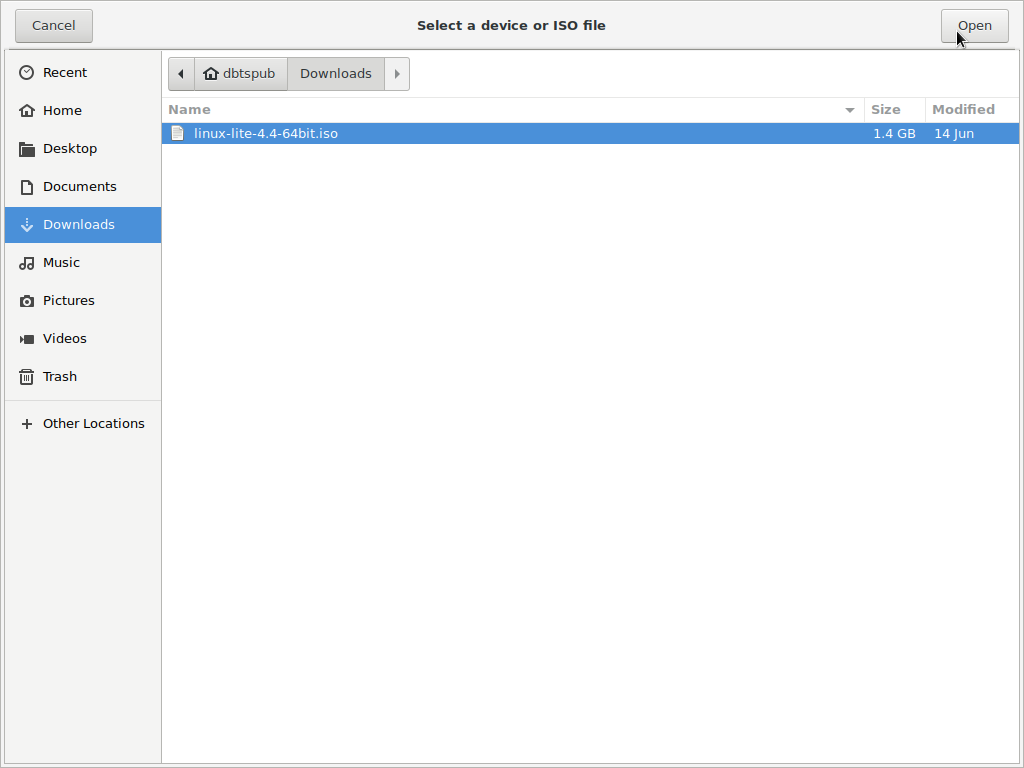
Click on Open and you will presented with the interface below.
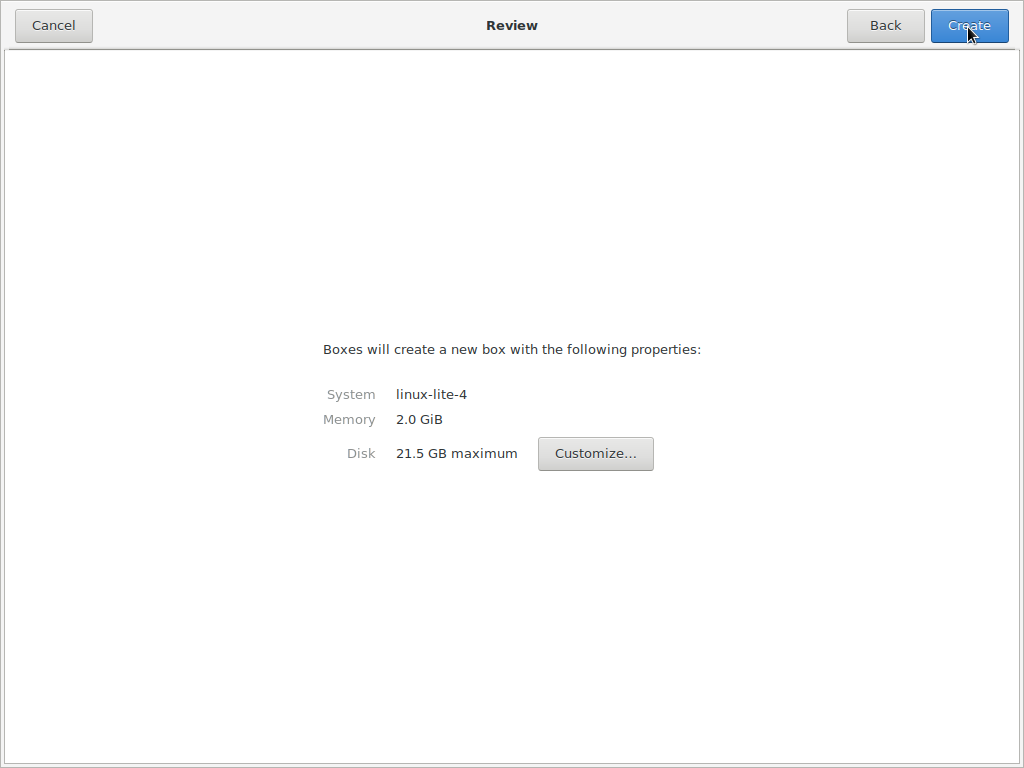
Click on Create and your downloaded live ISO will run in boxes. The Customize button will allow you to choose to use more RAM or a smaller disk size. It’s generally OK to leave the defaults but increasing the RAM will improve system performance if you have RAM to spare. See image below:
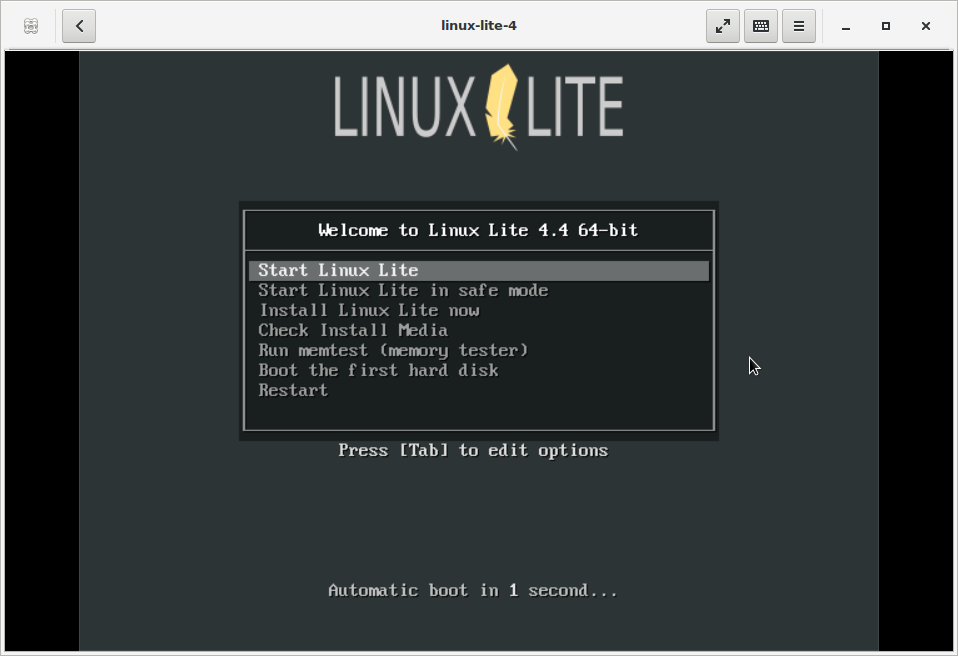
Running a live ISO in a box is a good way to test it for installation. Generally if the live ISO runs you will be able to install it using its installer, if you want. If you just run the live ISO, gnome boxes will automatically delete its box when you shut it down, but will prompt you for an OK to do so.
Section 2: Getting Around In Gnome-Boxes